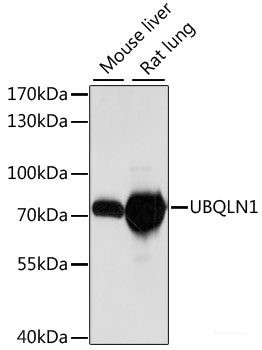Cookie preferences
This website uses cookies, which are necessary for the technical operation of the website and are always set. Other cookies, which increase the comfort when using this website, are used for direct advertising or to facilitate interaction with other websites and social networks, are only set with your consent.
Configuration
Technically required
These cookies are necessary for the basic functions of the shop.
"Allow all cookies" cookie
"Decline all cookies" cookie
CSRF token
Cookie preferences
Currency change
Customer-specific caching
FACT-Finder tracking
Individual prices
Selected shop
Session
Comfort functions
These cookies are used to make the shopping experience even more appealing, for example for the recognition of the visitor.
Note
Show the facebook fanpage in the right blod sidebar
Statistics & Tracking
Affiliate program
Conversion and usertracking via Google Tag Manager
Track device being used

If you have any questions, please use our Contact Form.
You can also order by e-mail: info@biomol.com
Larger quantity required? Request bulk
You can also order by e-mail: info@biomol.com
Larger quantity required? Request bulk
This gene encodes an ubiquitin-like protein (ubiquilin) that shares a high degree of similarity... more
Product information "Anti-UBQLN1"
This gene encodes an ubiquitin-like protein (ubiquilin) that shares a high degree of similarity with related products in yeast, rat and frog. Ubiquilins contain an N-terminal ubiquitin-like domain and a C-terminal ubiquitin-associated domain. They physically associate with both proteasomes and ubiquitin ligases, and thus are thought to functionally link the ubiquitination machinery to the proteasome to affect in vivo protein degradation. This ubiquilin has also been shown to modulate accumulation of presenilin proteins, and it is found in lesions associated with Alzheimer's and Parkinson's disease. Two transcript variants encoding different isoforms have been found for this gene. Protein function: Plays an important role in the regulation of different protein degradation mechanisms and pathways including ubiquitin- proteasome system (UPS), autophagy and endoplasmic reticulum- associated protein degradation (ERAD) pathway. Mediates the proteasomal targeting of misfolded or accumulated proteins for degradation by binding (via UBA domain) to their polyubiquitin chains and by interacting (via ubiquitin-like domain) with the subunits of the proteasome (PubMed:15147878). Plays a role in the ERAD pathway via its interaction with ER-localized proteins UBXN4, VCP and HERPUD1 and may form a link between the polyubiquitinated ERAD substrates and the proteasome (PubMed:19822669, PubMed:18307982). Isoform 1, isoform 2 and isoform 3 play a role in unfolded protein response (UPR) by attenuating the induction of UPR-inducible genes, DDTI3/CHOP, HSPA5 and PDIA2 during ER stress (PubMed:18953672). Involved in the regulation of macroautophagy and autophagosome formation, required for maturation of autophagy- related protein LC3 from the cytosolic form LC3-I to the membrane- bound form LC3-II and may assist in the maturation of autophagosomes to autolysosomes by mediating autophagosome- lysosome fusion (PubMed:19148225, PubMed:20529957, PubMed:23459205). Negatively regulates the TICAM1/TRIF-dependent toll-like receptor signaling pathway by decreasing the abundance of TICAM1 via the autophagic pathway (PubMed:21695056). Isoform 1 and isoform 3 play a key role in the regulation of the levels of PSEN1 by targeting its accumulation to aggresomes which may then be removed from cells by autophagocytosis (PubMed:21143716). Promotes the ubiquitination and lysosomal degradation of ORAI1, consequently downregulating the ORAI1-mediated Ca2+ mobilization (PubMed:23307288). Suppresses the maturation and proteasomal degradation of amyloid beta A4 protein (A4) by stimulating the lysine 63 (K63)-linked polyubiquitination. Delays the maturation of A4 by sequestering it in the Golgi apparatus and preventing its transport to the cell surface for subsequent processing. [The UniProt Consortium]
| Keywords: | Anti-DA41, Anti-UBQLN1, Anti-PLIC-1, Anti-hPLIC-1, Anti-Ubiquilin-1, Anti-Protein linking IAP with cytoskeleton 1, UBQLN1 Polyclonal Antibody |
| Supplier: | Elabscience |
| Supplier-Nr: | E-AB-65316 |
Properties
| Application: | WB |
| Antibody Type: | Polyclonal |
| Conjugate: | No |
| Host: | Rabbit |
| Species reactivity: | mouse, rat |
| Immunogen: | Recombinant protein of human UBQLN1 |
Database Information
| KEGG ID : | K04523 | Matching products |
| UniProt ID : | Q9UMX0 | Matching products |
| Gene ID | GeneID 29979 | Matching products |
Handling & Safety
| Storage: | -20°C |
| Shipping: | 4°C (International: -20°C) |
Caution
Our products are for laboratory research use only: Not for administration to humans!
Our products are for laboratory research use only: Not for administration to humans!
Information about the product reference will follow.
more
You will get a certificate here
Viewed




